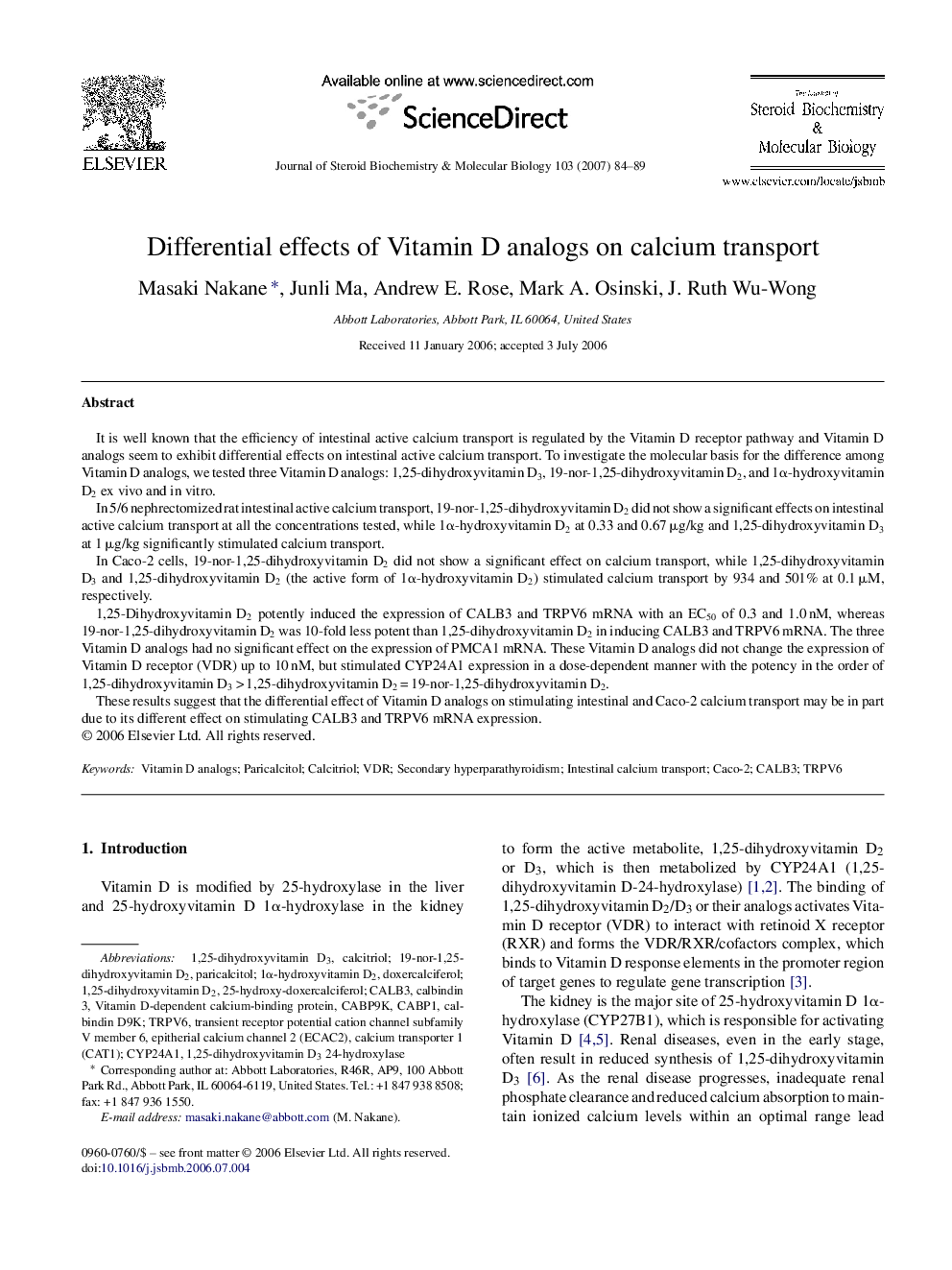| کد مقاله | کد نشریه | سال انتشار | مقاله انگلیسی | نسخه تمام متن |
|---|---|---|---|---|
| 1992331 | 1541080 | 2007 | 6 صفحه PDF | دانلود رایگان |

It is well known that the efficiency of intestinal active calcium transport is regulated by the Vitamin D receptor pathway and Vitamin D analogs seem to exhibit differential effects on intestinal active calcium transport. To investigate the molecular basis for the difference among Vitamin D analogs, we tested three Vitamin D analogs: 1,25-dihydroxyvitamin D3, 19-nor-1,25-dihydroxyvitamin D2, and 1α-hydroxyvitamin D2 ex vivo and in vitro.In 5/6 nephrectomized rat intestinal active calcium transport, 19-nor-1,25-dihydroxyvitamin D2 did not show a significant effects on intestinal active calcium transport at all the concentrations tested, while 1α-hydroxyvitamin D2 at 0.33 and 0.67 μg/kg and 1,25-dihydroxyvitamin D3 at 1 μg/kg significantly stimulated calcium transport.In Caco-2 cells, 19-nor-1,25-dihydroxyvitamin D2 did not show a significant effect on calcium transport, while 1,25-dihydroxyvitamin D3 and 1,25-dihydroxyvitamin D2 (the active form of 1α-hydroxyvitamin D2) stimulated calcium transport by 934 and 501% at 0.1 μM, respectively.1,25-Dihydroxyvitamin D2 potently induced the expression of CALB3 and TRPV6 mRNA with an EC50 of 0.3 and 1.0 nM, whereas 19-nor-1,25-dihydroxyvitamin D2 was 10-fold less potent than 1,25-dihydroxyvitamin D2 in inducing CALB3 and TRPV6 mRNA. The three Vitamin D analogs had no significant effect on the expression of PMCA1 mRNA. These Vitamin D analogs did not change the expression of Vitamin D receptor (VDR) up to 10 nM, but stimulated CYP24A1 expression in a dose-dependent manner with the potency in the order of 1,25-dihydroxyvitamin D3 > 1,25-dihydroxyvitamin D2 = 19-nor-1,25-dihydroxyvitamin D2.These results suggest that the differential effect of Vitamin D analogs on stimulating intestinal and Caco-2 calcium transport may be in part due to its different effect on stimulating CALB3 and TRPV6 mRNA expression.
Journal: The Journal of Steroid Biochemistry and Molecular Biology - Volume 103, Issue 1, January 2007, Pages 84–89